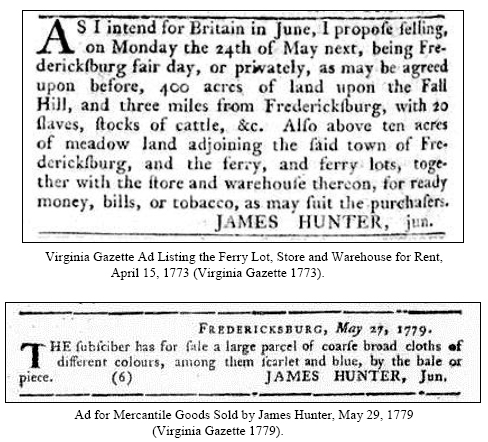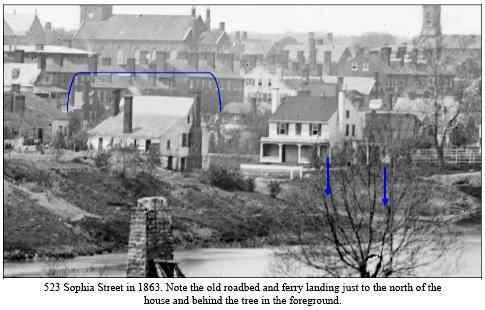BLOG, or DIE. Author Bio
Thursday, 3 November 2011
Op-Ed: John Taylor, Capitalism, and Occupy Wall Street
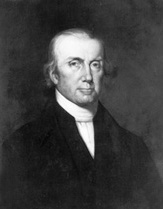 Whether one agrees or disagrees with the premise, the Occupy Wall Street Movement has at the very least, made us all think. It has brought the very concept of social-economics under the scrutiny of the public and identified a clear discrepancy in the way that many Americans view our current financial system. No doubt instigated by the country’s current economic and unemployment debacle, many participants (and observers) of the “Occupy-Movement” are now wondering if a radical change is necessary in order to remedy the country’s fiscal condition.
Whether one agrees or disagrees with the premise, the Occupy Wall Street Movement has at the very least, made us all think. It has brought the very concept of social-economics under the scrutiny of the public and identified a clear discrepancy in the way that many Americans view our current financial system. No doubt instigated by the country’s current economic and unemployment debacle, many participants (and observers) of the “Occupy-Movement” are now wondering if a radical change is necessary in order to remedy the country’s fiscal condition.
One of the most highly debated items at the top of their list is the practice for/against capitalism, the very keystone in the foundation of the country’s economic engine. This argument has split the proponents and critics of OWS further into two groups: those who oppose modern capitalism and those who vow to maintain it. Some folks vehemently believe that the current system is broken, while others feel that it was always destined to fail. Although OWS has splintered off into a variety of “causes,” one of the root beliefs of the movement was the unfair influence that wealthy (aka big business) has over the U.S. Government.
As a historian, I find it fascinating that one of our nation’s earliest politicians and political commentators may have predicted this dilemma well over 200 years ago. John Taylor of Caroline County, Virginia, predicted the problems of modern state capitalism and central banking. Both a successful politician and writer, Taylor served in the VA House of Delegates (1779–81, 1783–85, 1796–1800) and in the U.S. Senate (1792–94, 1803, 1822–24). He is considered by experts to be a Jeffersonian Democrat, although he participated in the Anti-Administration; Democratic Republican; Democratic Republican; and Crawford Republican parties. He also published multiple books on politics and agriculture, some of which have been credited with inspiring the States’ Rights and Libertarian parties.
It must be stated that Taylor was NOT an Anti-Capitalist, nor was he against a Free-Market system. He was however, an adamant critic of the way in which the governing-system could be overly-financed and manipulated by the rich. According to Thorton Miller’s Foreword in the re-released version of Taylor’s 1822 publication Tyranny Unmasked, (ed. F.Thornton Miller (Indianapolis: Liberty Fund, 1992):
A note of explanation is needed for Taylor's use in Tyranny Unmasked of the term “capitalists” to describe his opponents. When he began writing in the 1790s, he was more likely to use the phrase “monied aristocracy” to describe his enemies. Thirty years later, he believed the Constitution, Hamilton, Federalists, and Republican party moderation and compromise had allowed an aristocracy of wealth to rise in America. In America, instead of titled nobles, the lords were financiers. Instead of members of the House of Lords, they were the stockholders of the Bank of the United States. By the writing of Tyranny Unmasked, Taylor was using the more economic-sounding term, “capitalists,” to refer to these aristocrats. But, he was not opposed to capitalism, and he often cited Adam Smith and capitalist economists in his works, including this one. Like Adam Smith, Taylor opposed government intervention in the economy and wanted a natural economy, a free market system. Taylor opposed those capitalists who were not satisfied with natural economics and who sought to benefit through government intervention. He described his opponents more precisely when he used such phrases as “manufacturing capitalists” or “protective duty capitalists.”
There was, however, a major aspect of capitalism that Taylor rejected. He would not condone the potential pluralism of the capitalist, liberal, or free market theory: an America consisting of competing interests. For Taylor, the only good interest was natural and productive, and, in America, where the vast majority were farmers, that was agriculture, which should remain predominant. He was an agrarian first and foremost; he was a capitalist as long as most capital was going into agriculture. He believed there were fundamental principles in economics just as in politics. “Among these principles,” he writes in Tyranny Unmasked, “the most important is, that land is the only, or at least the most permanent source of profit; and its successful cultivation the best encourage of all other occupations, and the best security for national prosperity.”
Taylor “opposed those capitalists who were not satisfied with natural economics and who sought to benefit [themselves] through government intervention.” In other words, these types of capitalists (aka the 1%) could essentially purchase their way into a position of influence over the government, who would in turn, rule in a way that would benefit their own financial interests. Sound familiar? That logic (to me) is pretty simple: Capitalism works, but perhaps not American Capitalism (as it stands) which enables one class of income to unfairly dictate over another. In that regard, perhaps we can gain some new insight by listening to the folks at OWS. We should at least think about it. John Taylor did.
Perhaps this sign best explains this argument:
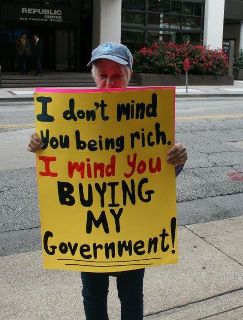
Posted by ny5/pinstripepress
at 11:01 AM EDT
Updated: Thursday, 3 November 2011 12:02 PM EDT
Permalink |
Share This Post

Tuesday, 1 November 2011
Ezekiel and Jefferson
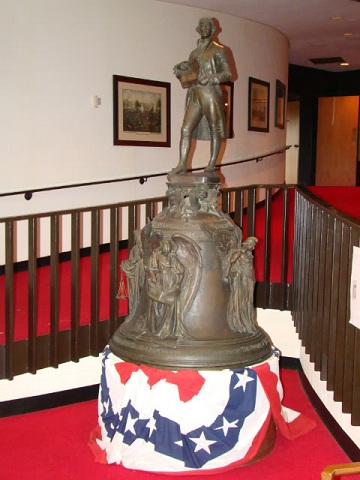
This bronze statue of Thomas Jefferson by Moses Ezekiel stands in the Virginia Military Institute’s Hall of Valor at the New Market Battlefield Museum. Ezekiel was the first Jewish member of the VMI Corps at New Market and a VMI graduate, Class of 1866. He also sculpted the “Stonewall Jackson” and "Virginia Mourning Her Dead” statues that sit on the grounds at VMI. Jefferson was a recurring subject for the artist. He did an allegorical statue of TJ for the Jefferson County Courthouse in Louisville, Kentucky, and a replica for the University of Virginia. Ezekiel’s bust of Thomas Jefferson was one of the first executed for the Senate’s Vice Presidential Bust Collection.
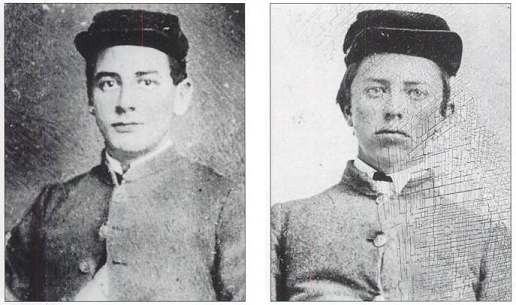
The connection between the sculptor and his subject went deeper than most artists as Ezekiel (left) was a close friend of Thomas G. Jefferson (right), a direct descendant of his namesake. The two men fought together at the Battle of New Market. Only one survived. According to Richard Lewis, author of "New Market Echoes":
One of the grievously wounded cadets lying on the soggy ground was youthful Thomas G. Jefferson, a direct descendant of President Thomas Jefferson. Hit by cannon fire and with life ebbing away, Jefferson soon found comfort in the person of his roommate, Cadet Moses Ezekiel, who had come to find him after the battle was over. Ezekiel procured a wagon and had Jefferson taken to a nearby house and placed in a bed. There he lingered for three days. With life's energy waning away, Jefferson asked Ezekiel to read to him from the Bible. Ezekiel, the first Jewish cadet at VMI, opened the book to the New Testament and read to his friend from John 1:4, "In my Father's house there are many mansions..." As others looked on, observing Jew and Gentile united in the bond of brotherhood. Jefferson thanked his beloved friend who now held him in his arms. "Moses," he said, "it is getting darker and darker." Seventeen-year-old cadet Thomas G. Jefferson then passed on into the corps Eternal.

Wednesday, 26 October 2011
For my fellow booze-hounds
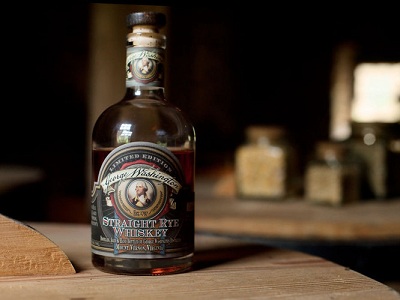
During his second term, President George Washington worked closely with the newly formed United States Marshals Service to quell an uprising known as “The Whiskey Rebellion.” This short-lived revolt was instigated by a volatile resistance that refused to pay federal taxes on whiskey. An accomplished distiller himself, Washington had a deep, personal interest in the manufacture and sales of the alcohol. In 1798, the year before his death, Washington’s distillery at Mount Vernon produced 11,000 gallons of whiskey and netted a profit of $7,500. That was an enormous sum of money over 200 years ago. By 1799, Mount Vernon’s whiskey distillery was the most productive and profitable aspect of Washington’s plantation. At one point, the demand for this special blend outweighed the distillery’s ability to produce it.
Fortunately, much like his contemporaries Benjamin Franklin and Thomas Jefferson, Washington kept meticulous notes on the day-to-day operations at Mount Vernon. This included his recipe and process for creating rye whiskey. Today, experts have reopened the distillery at MV to produce a limited batch of Washington’s favorite brew. According to the folks at Mount Vernon, “In November, master distiller Dave Pickerell, formerly of Maker’s Mark, used the same grain recipe (60% rye, 35% corn, and 5% malted barley), mixed and fermented in 120-gallon oak barrels, and double distilled in copper pot stills, just as it was done 200 years ago. One hundred- fifty gallons of whiskey were made at the Distillery site in November, of which 75 gallons will be aged for future sale. According to Pickerell, the unaged whiskey nose is, “slightly floral, earthy, and grainy,” with a taste that is “surprisingly sweet and mellow,” but with a bit of a bite, characteristic of unaged rye.”
To see all the details on how Mount Vernon’s modern distillers have reincarnated George Washington’s recipe, visit their blog at Making George Washington’s Whiskey. To purchase a bottle of this limited-edition concoction, visit The Shops at Mount Vernon starting December 1st. Cheers!

Saturday, 22 October 2011
They sure don’t build them like they used to.
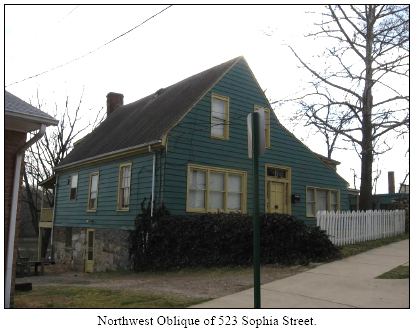
One of the biggest benefits of living in a tourist town like Fredericksburg Virginia is the fact that the entire city and surrounding countryside is covered in historical sites. Something as simple as going to work everyday finds me passing Civil War battlefields, colonial fort signs, and street upon street of landmark buildings. Every weekday morning at the crack (of-the-crack) of dawn, you will most likely find me walking down Sophia Street on my way to catch the VRE commuter rail at the Fredericksburg Train Station. One home in particular always catches my weary, bloodshot eyes as I pass by. It is the circa 1700’s house at 523 Sophia Street, certainly one of the more unusual looking residences and perhaps the oldest.
After voicing my interest in this house to my friends at the National Park Service I was directed to a local cultural resource consulting firm called Dovetail Cultural Resource Group. DCRG is a full-service, woman owned (SWAM certified) Cultural Resource management (CRM) firm. Dovetail's principals, Kerri Barile and Mike Carmody, have 25 collective years of experience conducting federal, state, and local preservation compliance work. They were hired by the property owner to conduct an intense study of the home and its history. Kerri Barile was generous enough to provide me with a copy of their findings and photographs and I am very grateful for her support.
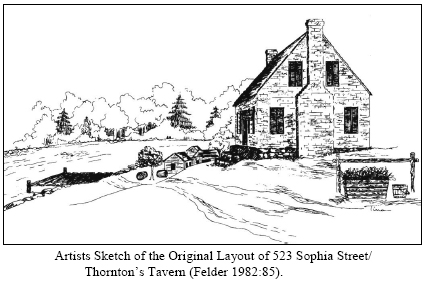
According to Dovetail’s report: “The history of…523 Sophia Street begins with the founding of Fredericksburg. The future townsite of Fredericksburg was granted to John Buckner and Thomas Royston in 1671. Though they never lived on this 2,000 acre property, they immediately leased the land to William and Sukey Livingston, which is how the area became known as ―The Leaseland from the 1670s through the 1720s. The community remained a small river enclave through the first two decades of the eighteenth century.” They added, “What is today the…523 Sophia Street property was just outside of the original town boundaries.”
In order to put the significant historical value of this home in perspective, we must first present how Fredericksburg fit into the colonial-era. The original English settlement of Fredericksburg Virginia was chartered in 1728. Named for Frederick, Prince of Wales, the town’s footprint was clustered in a fifty-acre area along the west bank of the Rappahannock River. It was originally engineered in a grid-like pattern, with wide streets that were named after British royalty. The initial plot consisted of sixty-four equally sized lots with two extra spaces for a church and a market. As the population increased, Fredericksburg found it necessary to expand the municipal boundaries. By 1759, the city had tripled its physical size, opening the door to both new merchants and settlers alike.
Many significant names from both the Colonial and Revolutionary periods called Fredericksburg home to include George Washington, Fielding Lewis, Hugh Mercer, George Weedon, John Paul Jones and James Monroe. Thomas Jefferson, although not a resident, frequented the area on a number of occasions and penned the Virginia Statute for Religious Freedom there.
Although the tract on which Fredericksburg was founded had included a frontier fort that had been established in 1676, its firsthand witnessing of military action in the fight for independence was none. It was the other Fredericksburg, of New York, that witnessed one of the first armed incidents leading up to the American Revolution. In November of 1765, two regiments of British troops arrived from Poughkeepsie and merged with another 200 Redcoats from New York City who were deployed to stop the spread of British land encroachment by local Patriots. Fredericksburg, Virginia that is, did make a significant contribution in the fight for liberty after Charles Dick teamed up with Fielding Lewis in 1775 to run the Fredericksburg gunnery. They would supply muskets for Colonial troops throughout the Revolution, while also repairing muskets captured from the British.
The story of 523 Sophia Street began long before America’s fight for independence. As Fredericksburg had worked early on to establish itself as an important port along the Rappahannock River, the city constructed a series of wharfs which became the first public river docks. Numerous warehouses developed around the waterfront to accommodate the new influx of business. The majority of these structures were located along Sophia Street.
According to Dovetail, William Byrd II visited Fredericksburg shortly after the county seat moved from Germanna. He discussed this experience in his diary where he wrote, “Colonel Willis walked me about his town of Fredericksburg. It is pleasantly situated on the south shore of Rappahannock River, about a mile below the falls. Sloops may come up and lie close to the wharf, within thirty yards of the public warehouses, which are built in the figure of a cross…Though this be a commodious and beautiful situation for a town, with the advantages of a navigable river and wholesome air, yet the inhabitants are very few. Besides Colonel Willis, who is the top man of the place, there are only one merchant, a tailor, a smith, and an ordinary keep.”
Modern dendrochronology (the science dealing with the study of the annual rings of trees in determining the dates and chronological order of past events) has showed that the home at 523 was built in 1746, making it the oldest confirmed building in Fredericksburg. It was originally a tavern and then a store before becoming a private residence. From the mid-1740s until his death in 1753, William Hunter and his nephew James ran a mercantile shop out of the old tavern building. When William passed away, he willed his property to his son James stating: “I bequeath to my son James Hunter my ferry lots with the benefit of the ferry and all houses belonging to them.” His widow, Martha Hunter, left the area with her children shortly after the death of her husband. Occupation of the parcel was then taken up by Williams‘s nephew and business partner James. Unfortunately, the partnership that had been was lost, and James soon found himself requesting payment of all the debts that were owned to him and his uncle.
Dovetail’s report outlines the decline that followed: “What was Thornton‘s Tavern had ceased to be a public venue after the property passed to James Hunter in the 1750s. Hunter discontinued the mercantile shop established by him and his uncle William, but it is likely that he continued to use the property as his residence. James also continued to own and operate the ferry. In 1771, James Hunter Junior returned to Fredericksburg to take over the land that his father left him almost 20 years earlier. However, two years later, he attempted to rent the ferry and shop as he planned to move to Britain. With the increasing hostilities between American and Britain, James apparently never went to Britain, as he advertised in the Virginia Gazette (1776) shortly after for a lost horse. Instead, James Junior attempted to revive the mercantile trade from this lot, but his new enterprise only lasted less than ten years.”
Upon the death of James Hunter Junior, the property passed to Archibald Hunter who never occupied the lot, or even lived in town. In 1814, the property was sold out of the Hunter family for the first time in almost 75 years. Joshua Long purchased the parcel which was bounded by the town wharf lot on the upper side, by the River Rappahannock on the East, by John T. Walker‘s Lott on the lower Side, and by Sophia Street on the back. The property remained in use as a residence and went on to witness (and survive) the Federal occupation and destruction that plagued the town during the Civil War. Today the home remains in remarkable shape, albeit an unusual color. It is currently used as part of an alcohol rehabilitation program and is slated for architectural restoration.
Perhaps Dovetails’s findings and recommendations best summarize how this lone, unassuming home remains an important link to the city’s past: “The building at 523 Sophia Street is an excellent example of an eighteenth century building that has been modified to fit owner needs and reoriented to comply with the new flow of a growing town. With an initial construction date of 1737, it is the oldest building in Fredericksburg. Even with a new timber frame structural system, a second half of the eighteenth century modification date still ranks among the oldest buildings in town. From a tavern to a mercantile shop and from a residence to a junk yard, the building at 523 represents the spectrum of Sophia Street and the larger changes affecting life in Fredericksburg for over three decades. Based on the architectural analysis and its historic context, it is recommended that 523 Sophia Street/Thornton‘s Tavern is both individually eligible for the National Register of Historic Places (NRHP) and is a contributing element to the Fredericksburg Historic District under Criteria A and C. The building exemplifies the city‘s growth from its earliest days through the twentieth century. Architecturally, the building is an excellent example of a modified vernacular Southern Colonial. Elements that highlight this style include the use of Berea/Aquia sandstone in the foundation and original chimney stacks, a timber frame structural system using hewn beams and pegs, and a sharply-pitched gable roof.”
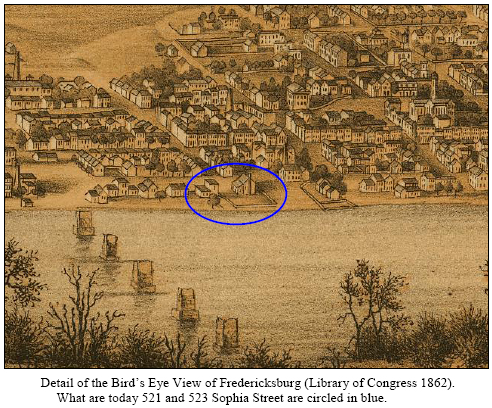
To put the historical significance of this house in perspective think of it like this…by the time that the Civil War came to Fredericksburg in 1862, this home was already 125 years-old. Today, it is 274.

Wednesday, 19 October 2011
Op-Ed: What would Madison think?
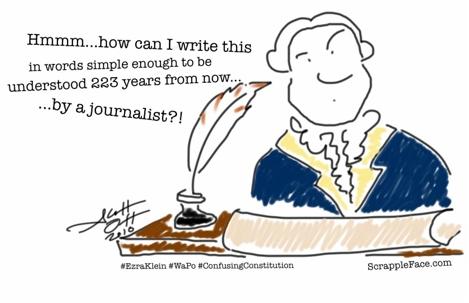
Nowadays, it seems like every politician wants to lay claim to the U.S. Constitution. Conservatives, Liberals, and Independents alike, all cite this framing document (ad-nauseum) as the foundation for their beliefs. It has become a public relations “go-to” when pitching campaign concepts to potential voters. As a result, it has also become a meaningless, predictable, and watered down reference. Campaign managers and speech writers across the country have enacted the strategy that when in doubt – refer to the Constitution.
Another common scare-tactic is to accuse your opponent’s ideas of being “Unconstitutional.” This works brilliantly as most citizens don’t walk around with a copy of the Constitution on hand. This renders them unable to challenge the claim and more likely to believe it. The unfortunate reality is that many of these candidates have absolutely no idea what they are talking about. Each party wants you to believe that THEIR defending the Constitution on your behalf while the opposition is hell-bent on trampling it.
The recent GOP debates have revealed a severe deficit in the understanding of American history. It gets worse as the current administration is also guilty of misrepresenting the Constitution on more than one occasion. Sadly, both the Democrats and Republicans have proven themselves to be woefully ignorant on this topic. And don’t forget about the fringe groups like the Tea Party and Constitutionalists who tend to treat the U.S. Constitution as some kind of sacred, religious mantra.
Perhaps these folks should take a field trip to the Center for the Constitution at James Madison’s Montpelier. The Center is a nonpartisan organization dedicated to the study and teaching of founding principles and constitutional ideals. It was established by The Montpelier Foundation in 2003 with a goal of becoming the nation's leading resource in high-quality constitutional education. The Center serves as a teaching academy, a place where professionals are immersed in an intellectual engagement with the theory and meaning of the American Constitution. Program activities take place in the Constitutional Village, where participants read, think, and discuss the ideas and innovations that underlie our nation's great experiment in self-government. According to their website:
The Center's programs vary by content, length, and audience but each are distinguished by three trademarks conducive to a constitutionally thoughtful citizenry: Constitutional thinking — using the fundamental ideas of the Constitution and the Bill of Rights as the framework for civic reasoning in a country where, to be a full member of the American democracy, one must be first a "Citizen of the Constitution." Rigorous interpretation of primary documents — as sites where the innovative concepts that animate the nation's political institutions can be encountered in their original form, so that American civic life can be preserved, restored, or reformed by its citizens. Respect for the intellectual capacity of our participants — teachers and professionals whose status as colleagues can provide the power of a community of scholars at Montpelier, inquiring into the values that make us a Constitutional People.
Nearly 10,000 professionals from all 50 states and 49 countries have participated in the Center's programs — among these are teachers, state supreme court justices, and elected officials. (Best of all, it is not polluted by any political agenda.) As a result, there is hope. People, yes regular everyday folks like you and me, are actually reading the Constitution. In 2010, with funding from the Claude Moore Charitable Foundation, the Center for the Constitution at James Madison’s Montpelier conducted a survey of Americans' understanding of the Constitution and of attitudes toward the structure and function of our government. According to these numbers it looks to me like the voters may have the upper hand.
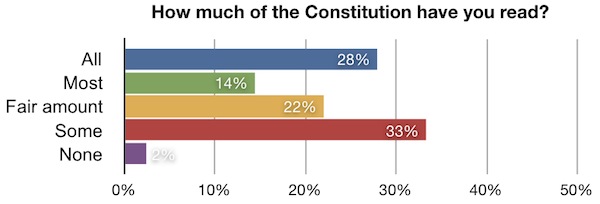
To these candidates/politicians-turned-hijackers, I simply say this: Get a copy of the Constitution. Read it from beginning to end. Read it again. Then ask one of your constituents to explain it to you.

Newer | Latest | Older
 Whether one agrees or disagrees with the premise, the Occupy Wall Street Movement has at the very least, made us all think. It has brought the very concept of social-economics under the scrutiny of the public and identified a clear discrepancy in the way that many Americans view our current financial system. No doubt instigated by the country’s current economic and unemployment debacle, many participants (and observers) of the “Occupy-Movement” are now wondering if a radical change is necessary in order to remedy the country’s fiscal condition.
Whether one agrees or disagrees with the premise, the Occupy Wall Street Movement has at the very least, made us all think. It has brought the very concept of social-economics under the scrutiny of the public and identified a clear discrepancy in the way that many Americans view our current financial system. No doubt instigated by the country’s current economic and unemployment debacle, many participants (and observers) of the “Occupy-Movement” are now wondering if a radical change is necessary in order to remedy the country’s fiscal condition.











